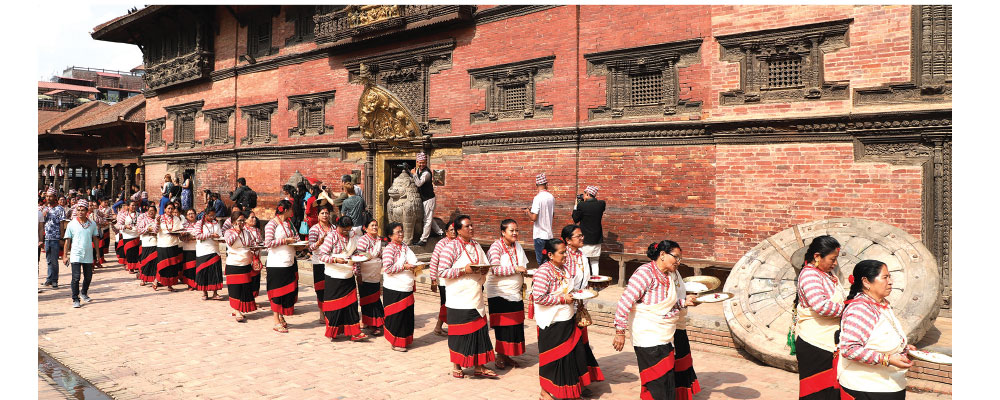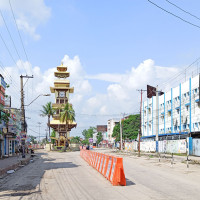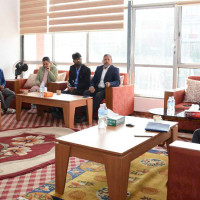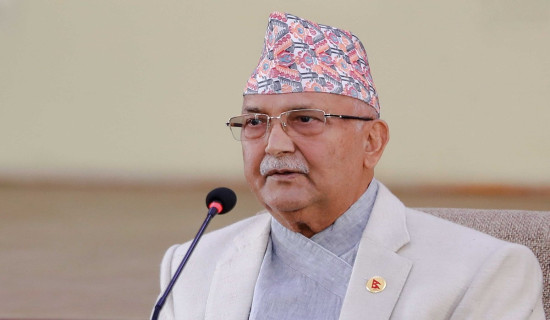- Monday, 5 January 2026
Are The Malla Kings Newar Or Thakuri?
A recent and stimulating debate on Facebook has revolved around classifying the Malla kings as Newar or Thakuri. This intriguing discussion has influenced my interest and prompted me to reflect on the issue critically. To clarify my perspective, it's essential to stress the importance of an open and impartial mindset. This approach is crucial, as it allows us to consider different perspectives and understand the issue's complexity. The unique identity of the Newa (Newar) community, with their resilience and adaptability, is expressed through their language, fabulous cultural traditions, and ancient civilisation. Their ability to adapt and thrive in the face of challenges is truly inspiring. Their identity does not neatly fit into the Hindu varna system as a distinct caste or race. The 'Chhattis Jaat Char Varna' system (thirty-six varnas of four castes) was not originally a part of the traditional Hindu varna system. There is insufficient evidence to justify its relevance to the Newar community, raising valid questions about its legitimacy.
The ancient Vedic civilisation, which predates the Aryan migration to India, is often linked with the Indus Valley civilization. However, recent historical research suggests that the Newar civilisation may have existed even before the Indus civilization. The Newar civilisation dates to the 6th century BC, preceding the Buddha and the Gupta dynasty era. Remnants of this early civilisation can be seen in the ancient temples, shrines, and monuments scattered throughout the Nepal Mandal, particularly in the Kathmandu Valley. The Newar civilisation has greatly influenced the history of Nepal, significantly shaping the nation's values of tolerance and respect for diverse religious beliefs, cultural practices, and indigenous traditions. This heritage has been pivotal in shaping Nepal as a prominent nation globally. Even in modern times, the Newar civilisation continues to be a source of pride, boasting a rich history of architecture, art, music, dance, customs, cuisine, and vibrant festivals. The roots of the Newar civilisation can be traced back to as early as the 8th or 7th century BC, when the Kathmandu Valley was conquered by the Kirati tribe, led by Yalambar, the first king of the Kirat dynasty. Since then, various communities, such as the Lichhavi and Malla dynasties, have ruled the Kathmandu Valley, leaving an enduring imprint on Newar history, culture, and civilisation. During the reign of the Shah and Rana dynasties, the vibrant Newar civilisation, Nepal Bhasha language, and the traditional Guthi system witnessed a gradual and systematic decline. This era is widely acknowledged as the dark age of the Newar civilisation, representing a significant decline in cultural and societal prosperity. However, the 2015 constitution of Nepal, which established Nepal as the Federal Democratic Republic, has sparked a revival in all ancient cultures, including that of the Newars, giving hope for a brighter future.

According to the 2078 national census, the Newar population in Nepal was recorded at 1,341,363, constituting 4.67 per cent of the total population. Most Newars live in the Kathmandu Valley, including Kathmandu, Bhaktapur, and Lalitpur, as well as in Dhulikhel, Banepa, Panauti, Dolakha, Chautara, and Bandipur. Additionally, Newars can also be found in the eastern and western hills, as well as the lowlands of southern Nepal, known as the Terai-Madhesh. The population consists of 656,144 males and 685,219 females. Out of this, 863,380 individuals speak Nepal Bhasha, the Newar language, while 478,983 Newars do not speak their mother tongue for various reasons. The same census report also reveals that 1,179,948 individuals (4.05 per cent ) speak their ancestor's language, i.e., Nepal Bhasha. Additionally, 32,604 people use Nepal Bhasha as their second language, potentially including members of other communities that have lived in the Kathmandu Valley for extensive periods.
The Newar community is a rich embroidery of diversity, comprising distinct groups with unique social and professional backgrounds. There are Brahmins (Rajopadhyay, Rimal, Sharma, Jha, Mishra, etc.), Chhetris and Thakuris (Malla, Pradhan, Amatya, Joshi, Shrestha, Bijukchhe, Mathema, Rajbhandari, Maskay, Mulmi, Vaidya, etc.), and Kayastha (Kasaju, Sainju, Bhuju, Faiju) primarily engage in government service. Baniya, Tuladhar, Manandhar, etc., are associated with trade and business. Furthermore, there are groups such as Sthapit, Kansakar, Tamrakar, Ranjitkar, Chitrakar, Swarnakar, Byanjankar, Malakar, Shilpakar, Nakarmi, Khadgi, etc., renowned for their traditional craftsmanship. The diverse community also includes the Shakya and Bajracharya communities, which have a religious and craftsmanship focus, and several other categories involved in labour, skills, and various services, including the Shivamargi, Buddhamargi, and other margis.
Nepal Bhasa, also referred to as Newar, is a language that is part of the Tibeto-Burman branch within the Sino-Tibetan language family. It is predominantly spoken by the Newar community residing in the Kathmandu Valley of Nepal. The Newar community proudly embraces individuals of all castes, clans, and religions who honour the Newar language, culture, customs, cuisine, social norms, and civilisation as part of its rich and diverse identity. Mallas may be the Thakuris; however, Newar communities accepted them as kings when they honoured and embraced Nepal Bhasha, Newar culture, and civilisation as theirs. For example, the Jha community, initially comprising Madhesi Brahmins, was welcomed into the fold as Newar Brahmins upon adopting Newari traditions, language, and way of life. For centuries, the Kathmandu Valley has been home to a diverse array of people who have coexisted with and shown deep respect for the Newar language, culture, and civilisation as an integral part of their lives.
The Guthi system in Newar society safeguards the cultural and religious significance of temples, shrines, heritage sites, and intangible practices like feasts, festivals, and funeral rites. It is a distinct system in Nepal that represents community trusts and upholds traditional land ownership and Newar social units. In 2019, a significant mass protest in Kathmandu, known as the historic Guthi movement, opposed the government's proposed amendment to the Guthi Ain (laws) to gain control over it. The movement included activists from traditional Newar communities and people from varied castes and creeds who have lived in the Kathmandu Valley for over a century and respected Newar civilisation as their own. They deeply cherished and respected the Newar language, culture, and civilisation, encompassing Jha, Rajopadhya, Rimal, Sharma, Mishra, Rauniyars, Marwadi, Dhobi, Muslims, Tibetans, Tamangs, Kirats, and so on. As a result of the widespread impact of the movement, the proposed Guthi Bill of 2019 was withdrawn by the Government of Nepal.
The Newar community significantly influences the language, culture, and civilisation of various regions in Nepal. They have their own unique Ranjana script and a national era called Nepal Sambat, reflecting their progressive thinking. For the Newars, a deep appreciation for their language, culture, and civilisation is fundamental to their identity, regardless of their ancestral background. Unlike the traditional varna system, the Newar caste structure is not foundational, as their community consists of diverse socio-economic and cultural heritages. Newar identity is grounded in self-respect, self-determination, and self-reliance, shaping a historically significant linguistic, cultural, economic, and social community. While their language is Nepal Bhasha, their era is Nepal Sambat, and their motherland is Nepal Mandal. They have deliberately chosen not to endorse any particular caste, religion, or belief in order to preserve the nation's identity. Therefore, accusing the Newar community of being communal doesn't hold much weight. The Newar community is renowned for its rich diversity and derives strength from its pluralistic nature. It comprises various ethnicities and has a rich history of unity amid diversity. As a result, anyone who respects and embraces the Newar language, culture, and civilisation is considered a member of the Newar community in Nepal.
(The author is a human rights defender and social activist.)



-original-thumb.jpg)
-square-thumb.jpg)

-original-thumb.jpg)
-square-thumb.jpg)









